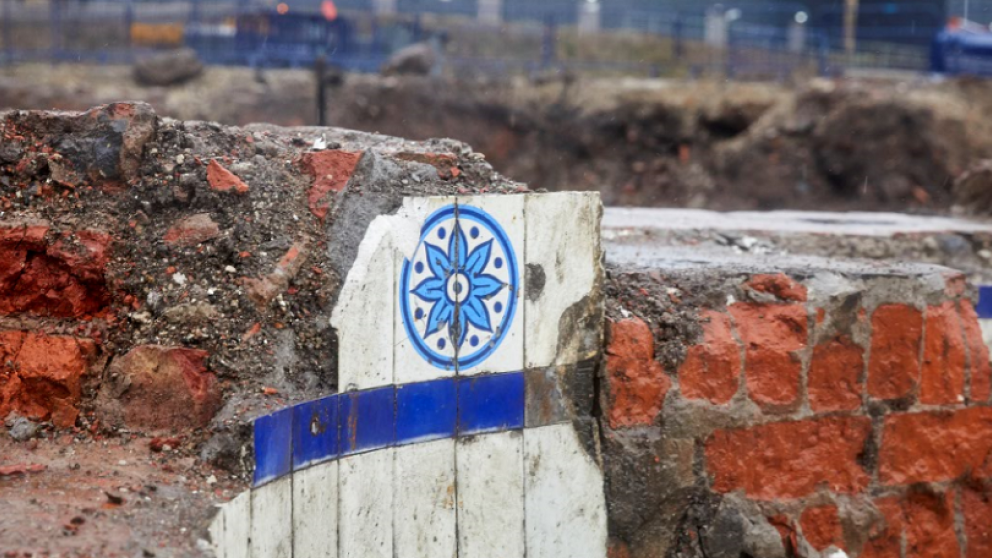Salford Archaeologists uncover Manchester’s industrial past at Mayfield

The University of Salford is home to the Centre for Applied Archaeology and has a leading reputation for its pivotal role in archaeology knowledge both locally and across the country.
The Centre has an impressive list of clients with a recent project seeing the team involved in Mayfield, a major city centre regeneration scheme in the heart of Manchester. As work begins on the creation of the city’s first new public park in 100 years, archaeologists from the University of Salford have uncovered the remains of Manchester’s historic Mayfield Baths. The team of archaeologists are conducting painstaking excavation work on behalf of the Mayfield Partnership to fully document the remains of baths. Their work will allow historians to learn more about life during the industrial revolution.
Opened in 1857 on what is now Baring Street, Mayfield Baths were a vital public amenity at the centre of Manchester’s textiles industry. The public baths provided workers and residents – the majority living in grim, crowded conditions – with access to running water for bathing and laundry. Featuring male and female pools (the largest measuring 62ft), family wash rooms and laundry facilities, the building suffered bomb damage during World War II and was subsequently demolished.
The archaeologists are using 3D laser scanning and low level drone photography to produce an accurate, detailed record of the findings which will later be combined with historical documents and CAD software to produce digital drawings, in a process known as ‘preservation by record.”
The Mayfield Partnership, the public-private venture led by regeneration specialist U+I, will harvest and preserve the ornate tiles recovered from the pools to reuse them in the future as the new £1.4bn Mayfield neighbourhood takes shape.
Graham Mottershead, Excavations Manager at Salford Archaeology, said: “The Mayfield bathhouse is a fascinating example of the social and public health advancements that came about during the industrial revolution. As the city’s population boomed with factory workers, crowded and substandard living conditions gave rise to the spread of cholera and typhoid. For those living and working around Mayfield the Mayfield Baths would have been a vital source of cleanliness and hygiene.
“The sheer pace of change and innovation during the industrial revolution means many advancements were not recorded. Excavations like this help us to learn a great deal about what is arguably the most important period of human history and, in the case of Mayfield, a location that is so very relevant to the heritage of the people of Manchester.”
Overall, the Mayfield regeneration scheme – one of the largest in the UK – is set to transform a previously derelict part of Manchester’s industrial heritage to deliver 1,500 homes, 1.6m sq ft of market-leading commercial space, 300,000 sq ft of retail and leisure facilities and 14 acres of new public realm.
The delivery of Mayfield Park will support approximately 150 new construction jobs. It is envisaged that Mayfield will create opportunities for more than 10,000 office, retail, leisure jobs, in addition to over 630 FTE construction jobs, up to 2,500 supply chain roles and 25 apprenticeships annually. Over the next decade, the scheme is forecast to deliver over £7.4bn of GVA to the local economy.
It is being led by the Mayfield Partnership, a public-private venture comprising regeneration specialist U+I, Manchester City Council, Transport for Greater Manchester and developer LCR.
Photographs: Mark Waugh
For all press office enquiries please email communications@salford.ac.uk.
Share:
